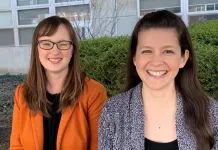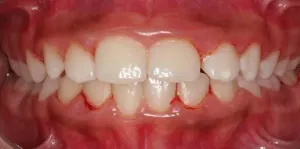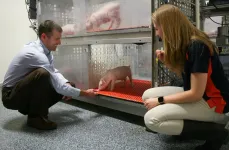(Press-News.org) LA JOLLA, CALIF. - April 14, 2021 - Scientists at Sanford Burnham Prebys Medical Discovery Institute have shown that two existing drug candidates--JAK inhibitors and Mepron--hold potential as treatments for a deadly acute myeloid leukemia (AML) subtype that is more common in children. The foundational study, published in the journal Blood, is a first step toward finding effective treatments for the hard-to-treat blood cancer.
"While highly successful therapies have been found for other blood cancers, most children diagnosed with this AML subtype are still treated with harsh, toxic chemotherapies," says Ani Deshpande, Ph.D., assistant professor in Sanford Burnham Prebys' National Cancer Institute (NCI)-designated Cancer Center and senior author of the study. "We are excited about this study because we uncovered two promising therapeutic targets for which drugs already exist, setting the stage for potential clinical trials."
AML is often caused by a chromosomal fusion--when part of one chromosome attaches to another chromosome--resulting in a fused protein that drives out-of-control growth of immature blood cells. There are dozens of different fusion proteins that can cause the cancer, and survival rates may vary depending on the fusion type. This study focused on a subtype of AML with fusions involving a protein called AF10, which is common in pediatric AML and deadlier. Many children with these subtypes don't survive very long; and if a child does respond to treatment, they often have debilitating, life-long side effects that stem from receiving chemotherapy at a young age.
"After Luke battled AML, we learned there are little to no treatment options for his fusion type and that this type of cancer research is really underfunded," says Rena Johnson, co-founder of the Luke Tatsu Johnson Foundation, which partially funded the research. "These findings fill me with hope for a future where children like Luke can grow up and thrive."
Targeting cancer-specific fusions
When chromosomal fusions were first identified as a cause of AML, cancer researchers were hopeful that treatments could be found relatively easily. The protein produced by the fusion is unique to cancer cells, providing a target that could selectively kill tumors and spare healthy cells.
"One of the most successful cancer drugs ever developed, Gleevec, actually targets a fusion protein. This drug melts away tumors in people with another type of blood cancer, chronic myelogenous leukemia, or CML," explains Deshpande. "However, we lucked out a bit because the fusion protein that Gleevec targets is a kinase, a type of protein that is relatively easy to make drugs against. Now we know that most fusions involve other types of proteins such as transcription factors or chromatin modifiers, which aren't as easily druggable."
To overcome this hurdle, Deshpande and his team got creative. The scientists decided to map which proteins interact--or are "friends" with--the abnormal AF10 fusion proteins, leveraging mouse models that allow the protein's production to be switched on and off. This work revealed that AF10 fusion proteins activate the inflammatory signaling proteins JAK1 and STAT3--both druggable targets for which inhibitors already exist. The scientists showed that both JAK1 and STAT3 inhibitors slowed the growth of human AML cells; and that Mepron, a STAT3 inhibitor, melted AML tumors and extended survival in mice with the CALM-AF10 mutation.
"Interestingly, many people with AML already get Mepron to protect against infection after a bone marrow transplant, and analysis suggests that is linked to better outcomes. Our studies show that AF10 fusion positive patients may benefit from this drug," says Bo-Rui Chen, Ph.D., who completed the study as a postdoctoral researcher in the Deshpande lab, and is the co-first author of the study. "We are also very excited about our findings because one JAK inhibitor is already FDA-approved and many others are being developed for autoimmune disorders, which means they could be advanced to the clinic relatively quickly."
The scientists do caution that while the results are exciting, more data is needed before children or adults with these AML subtypes can start receiving the drug candidates.
"Before we can proceed to clinical trials testing these drugs in people with these AML subtypes, we need to test both drugs in larger cohorts of mouse models," says Anagha Deshpande, Ph.D., senior research associate in the Deshpande lab and co-first author of the study. "However, if those studies are favorable, clinical development will be accelerated since these drugs are already known to be safe in humans."
INFORMATION:
Additional study authors include Karina Barbosa, Xue Lei, Narayana Yeddula, Alexandre Rosa Campos, Robert J. Wechsler-Reya, Anindya Bagchi, Ze'ev A Ronai, Sumit Chanda and Peter Adams of Sanford Burnham Prebys; Maria Kleppe, Pablo Sánchez Vela and Ross L. Levine of Memorial Sloan Kettering Cancer Center; Soheil Meshinchi of Fred Hutchinson Cancer Research Center; Connie J. Eaves of British Columbia Cancer Agency; Irmela Jeremias of German Center for Environmental Health; Torsten Haferlach of MLL Munich Leukemia Laboratory; and David A. Frank and Scott A. Armstrong of Dana Farber Cancer Institute.
The study's DOI is 10.1182/blood.2020009023.
Research reported in this press release was supported by the National Institutes of Health (NIH) (R00CA154880, P30CA030199, P30CA008748, R35CA197594), the Rally Foundation for Childhood Cancer Research and Luke Tatsu Johnson Foundation (19YIN45), Children's Cancer Research Fund, V Foundation for Cancer Research (TVF) (DVP2019-015), Lady Tata foundation, and the Leukemia and Lymphoma Society.
About Sanford Burnham Prebys Medical Discovery Institute
Sanford Burnham Prebys is a preeminent, independent biomedical research institute dedicated to understanding human biology and disease and advancing scientific discoveries to profoundly impact human health. For more than 40 years, our research has produced breakthroughs in cancer, neuroscience, immunology and children's diseases, and is anchored by our NCI-designated Cancer Center and advanced drug discovery capabilities. For more information, visit us at SBPdiscovery.org or on Facebook at facebook.com/SBPdiscovery and on Twitter @SBPdiscovery.
Half a century had passed, but UC Santa Barbara Professor Armand Kuris was sure he'd been here before. In fact, he was completely certain. After all, he had detailed notes of the location, written carefully in India ink when he was still a graduate student.
This time, though, Kuris served as a seasoned mentor for several young researchers who hadn't even been born when he first visited the site. Truth be told, many of their parents hadn't yet been born.
This was just one of many shorelines along the coast of the Pacific Northwest where the group was repeating ecological field work Kuris conducted in 1969 and 70. He teamed up with Assistant Professor Chelsea Wood of the University of Washington and her lab -- all parasite ...
A new study co-authored by University of Colorado Cancer Center researcher Srinivas Ramachandran, PhD, shows how DNA segments known as enhancers function in cells.
The paper published last month in Molecular Cell highlighted the work from Ramachandran, along with Satyanarayan Rao, both part of the Department of Biochemistry and Molecular Genetics at the CU School of Medicine, and Kami Ahmad from the Fred Hutchinson Cancer Research Center.
Enhancers are DNA sequences that drive cell-type-specific gene expression, developmental transitions, and cellular responses to external stimuli. They typically have multiple binding sites for transcription factors, which are proteins that help turn specific genes "on" or "off" by binding to nearby DNA. Ramachandran ...
URBANA, Ill. - Food waste and obesity are major problems in developed countries. They are both caused by an overabundance of food, but strategies to reduce one can inadvertently increase the other. A broader perspective can help identify ways to limit food waste while also promoting healthy nutrition, two University of Illinois researchers suggest.
"You can reduce food waste by obtaining less or eating more. Our concern was that if people are reducing waste by eating more, what does that mean for nutrition? And how do we think about these tradeoffs in a way that promotes both good nutrition outcomes and good food waste outcomes? ...
By Luciana Constantino | Agência FAPESP – Adults with periodontitis transmit bacteria that can cause the disease in future to their children, and the bacteria remain in the oral cavity even when the children undergo treatment of various kinds, reinforcing the need for preventive care in the first year of a baby’s life. This is the main conclusion of a study conducted at the University of Campinas (UNICAMP) in the state of São Paulo, Brazil. An article on the study is published in Scientific Reports.
Periodontitis is an inflammation of the periodontium, the tissue that supports the teeth and maintains them in the maxillary and mandibular bones. The disease is triggered by bacterial infection. Symptoms include bleeding of the gums and halitosis. In severe cases, it ...
BUFFALO, N.Y. -- Graphene excels at removing contaminants from water, but it's not yet a commercially viable use of the wonder material.
That could be changing.
In a recent study, University at Buffalo engineers report a new process of 3D printing graphene aerogels that they say overcomes two key hurdles -- scalability and creating a version of the material that's stable enough for repeated use -- for water treatment.
"The goal is to safely remove contaminants from water without releasing any problematic chemical residue," says study co-author Nirupam Aich, PhD, assistant professor of environmental engineering at the UB School of Engineering and Applied Sciences. "The aerogels ...
HERSHEY, Pa. -- People who trust television and Facebook to provide them with accurate news about the coronavirus pandemic are less knowledgeable about COVID-19, according to a new study, which assessed people's knowledge of the virus in the earliest stages of the pandemic.
The study, published in the peer-reviewed journal Current Medical Research & Opinion, surveyed 5,948 adults in Pennsylvania between March 25-31, 2020, and found that those who relied on social media and TV for news were less likely to get the facts right about the coronavirus.
In fact, adults that used Facebook as an additional ...
URBANA, Ill. - Before humans can benefit from new drug therapies and nutritional additives, scientists test their safety and efficacy in animals, typically mice and rats. But, as much as they've done for biomedical research, rodents aren't always the best research model for studies on neonatal brain development and nutrition. That's where pigs can play an important role.
University of Illinois researchers say the domestic pig is ideal for these studies because their brain size, rate of development, and digestive system are excellent analogues for human newborns.
They know a lot about pig brains, having built the first - and recently, the second - complete, MRI-based atlases of the organ. They've used the first to study ...
La Jolla, CA--The human genome contains the instructions to make tens of thousands of proteins. Each protein folds into a precise shape--and biologists are taught that defined shape dictates the protein's destined function. Tens of thousands of singular shapes drive the tens of thousands of needed functions.
In a new Cell Reports study, researchers at La Jolla Institute for Immunology demonstrate how Ebola virus has found a different way to get things done. The virus encodes only eight proteins but requires dozens of functions in its lifecycle. ...
New research by a team at Resources for the Future (RFF) has found that at least 27% of new pests in the United States were initially detected by members of the general public. The study, which was published today in the journal Conservation Science and Practice, seeks to understand who is identifying new invasive species that make their way into the United States.
The RFF team developed and analyzed a new dataset of pest discoveries in the United States, using a sample size of 169 detections from 2010 to 2018. Researchers divided discovery sources into three categories: government agencies, local extension specialists and researchers, and members of the public, with the latter category including community ...
ITHACA, N.Y. - Just as humans are challenged from the social isolation caused by the coronavirus pandemic, a new study finds that a solitary lifestyle has profound effects on the brains of a social insect: paper wasps.
Paper wasps recognize the brightly colored faces of other paper wasps, an ability they lose when reared in isolation. The wasps' ability to remember faces is similar to primates and humans, but unlike other social insects.
The study revealed that when adult wasps are housed in solitude, visual areas of their brains - especially those involved with identifying nuanced color patterns and shapes - are smaller and less developed ...





